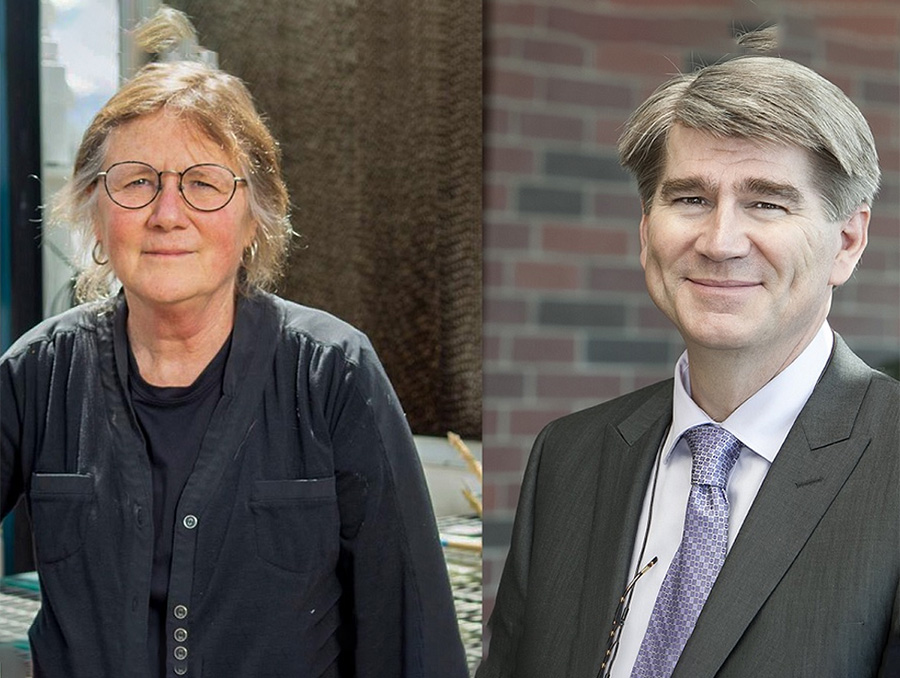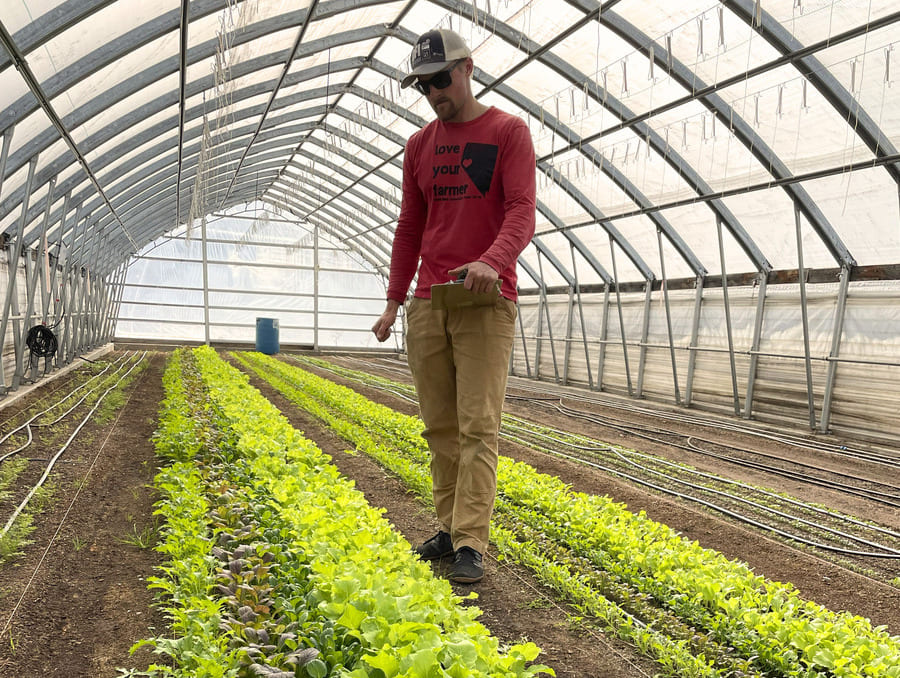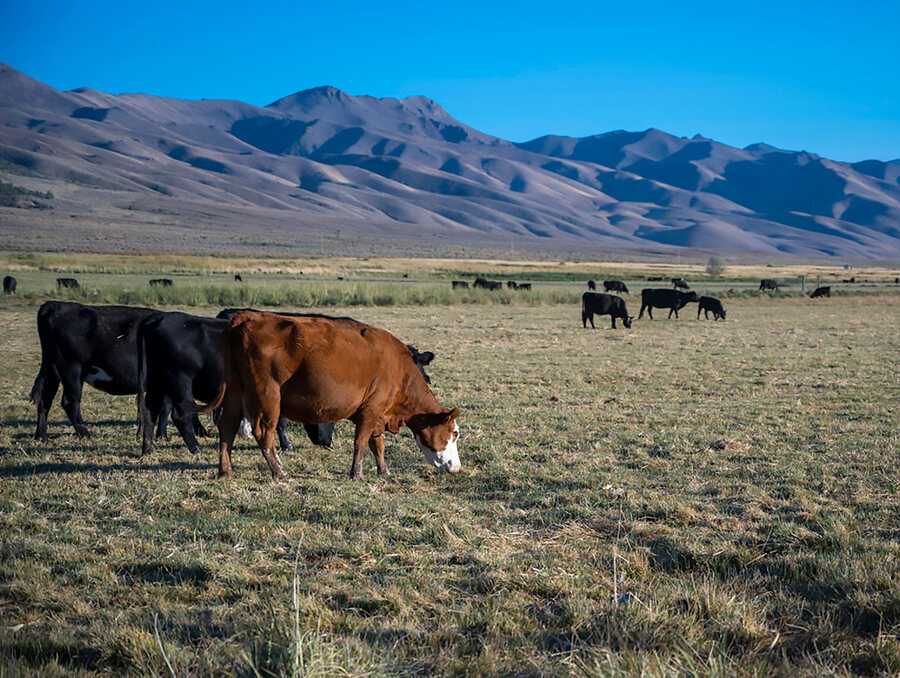Mae Gustin and John Cushman, professors in the College of Agriculture, Biotechnology & Natural Resources at the University, have been elected to the 2022 class of American Association for the Advancement of Science Fellows, one of the most distinguished honors within the scientific community. With members in more than 91 countries across the globe, the AAAS is the world's largest multidisciplinary scientific society and a leading publisher of cutting-edge research through its Science family of journals.
Gustin is in the College’s Department of Natural Resources & Environmental Science and was awarded the honor for her distinguished contributions to the field of biogeochemistry, particularly for understanding the fate and transport of mercury in the environment. She is only one of 14 scientists to be elected a Fellow in the atmospheric and hydrospheric sciences category this year.
Cushman is in the Department of Biochemistry & Molecular Biology, and was awarded the honor for his distinguished contributions to the field of plant science, particularly for his research on plant response to abiotic stresses, including salinity, drought and cold, and how to improve plant tolerance to these stresses. He is only one of 20 scientists to be elected a Fellow in the agriculture, food and renewable resources category this year.
“Mae and John are truly top-notch researchers, not just at this University or in this State, but internationally," said Bill Payne, Dean of the College, who himself is an AAAS Fellow. "Mae’s research on atmospheric contaminants like mercury is important to the study and mitigation of air pollution worldwide. And John’s efforts to increase tolerance of plants to challenging conditions have the potential to turn currently underutilized land into land that can be used to provide food and fuel for the world. I could think of no two professors more deserving of the prestigious AAAS Fellowship honor."
Mae Gustin
Mae Gustin joined the University in 1994. While her work first focused on mercury contaminating soil and wildlife, her interest increasingly became focused on how that mercury then evaporates into gaseous elemental and oxidized mercury and becomes an atmospheric contaminant. She now identifies her primary research interest as the study of inorganic contaminants in the environment, with a particular interest in regional and long-range transport of air pollution, and how air moves in complex terrains. Over her career, she has published more than 200 peer-reviewed journal articles and made nearly 200 presentations at national and international conferences.
The University named Gustin Outstanding Researcher of the Year in 2016, followed by the Regents of the Nevada System of Higher Education naming her Researcher of the Year in 2018. She was also named a University Foundation Professor in 2009. In 2015, her research on the release, measurement and impact of mercury in the atmosphere was considered by scientists and scholars working to develop a United Nations treaty designed to protect human health and the environment from the release of harmful mercury compounds.
Gustin has worked in her lab and with colleagues at the University, nationally and internationally to develop newer technologies that more accurately measure airborne mercury and show that older technologies were undermeasuring the contaminant by as much as 80%. Most recently, they completed research to prove newer technology developed at the University of Nevada, Reno and Utah State University has improved accuracy.
“It takes a lot of work to change dogma and form a new paradigm,” Gustin says. “This is how science evolves. You develop something and, if it’s good, others try it and get on board. I’m honored that AAAS has recognized the significance of my research on mercury in the environment. Fellows are singled out because of meritorious contributions to the advance of science.”
John Cushman
John Cushman joined the University in 2000, and served as the director of the graduate program in biochemistry 2005-2022. The overarching theme of his scholarly contributions is understanding plant responses to abiotic stresses, including salinity, drought and cold, and generating novel approaches for improving plant tolerance to these stresses. By improving tolerance to these stresses in model plant species, Cushman hopes to move these water-conserving adaptations into food, feed and biofuel crops, enabling production on agricultural lands with challenging soils or in challenging climates. He has published over 200 peer-reviewed research articles and book chapters and holds two patents.
Through his research, Cushman has become one of the world's leading researchers on the molecular genetics of a specialized type of photosynthesis, which is known as “crassulacean acid metabolism” or CAM photosynthesis. Using this type of photosynthesis, some of the most water-efficient plants take up carbon dioxide at night instead of during the warmer daytime, which improves efficiency of water use and adaption to arid climates. In his lab, he has used CAM to engineer plants with increased tolerance to challenging conditions. Cushman has also focused his research efforts on different arid-land crops such as cactus pear (also known as Opuntia), camelina, teff and Saharan mustard.
“CAM used to be thought of as a curiosity: a weird, esoteric thing that a few desert plants do," Cushman said. "It was a biological curiosity, but wouldn't you want to have this biochemical adaptation apply to more plants to improve water-use efficiency, especially when many agricultural regions throughout the world are facing hotter and more arid conditions? There was little inkling early on that this would have the impact it is having. Now, many researchers are realizing the importance of this," he said.
The University named Cushman Outstanding Research of the Year in 2013, followed by the Regents of the Nevada System of Higher Education naming him Researcher of the Year in 2017. He was also named a University Foundation Professor in 2011.
“I am truly humbled and honored to be elected as an AAAS Fellow by my scientific peers,” Cushman said. I think this type of recognition also highlights the high caliber of research being conducted at UNR.”
Gustin and Cushman join Chemistry Professor Ana de Bettencourt-Dias and Biology Professor Lee Dyer from the University’s College of Science as part of the newly elected class of AAAS Fellows.















